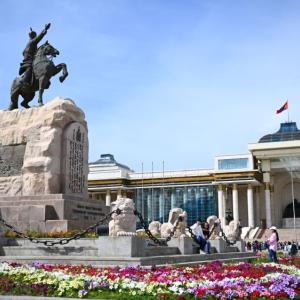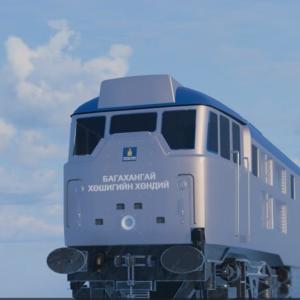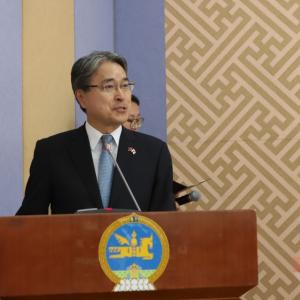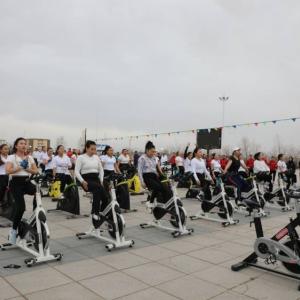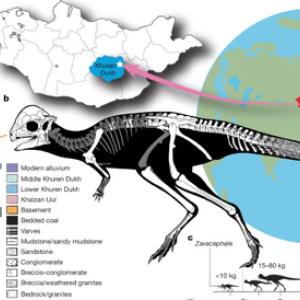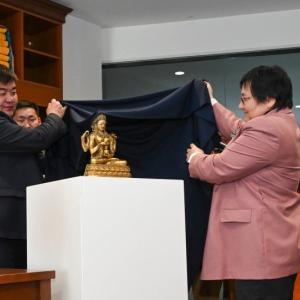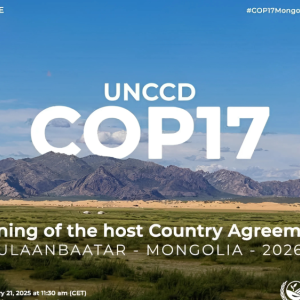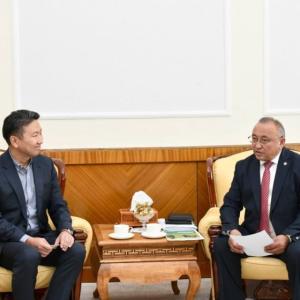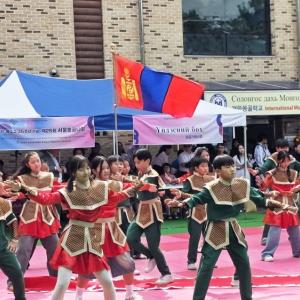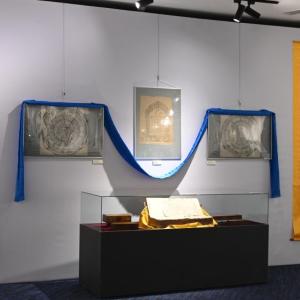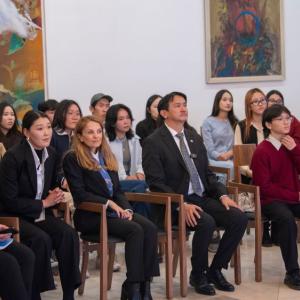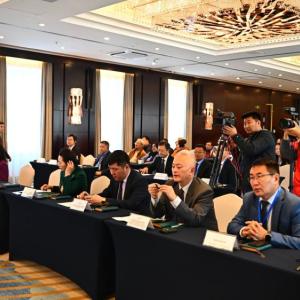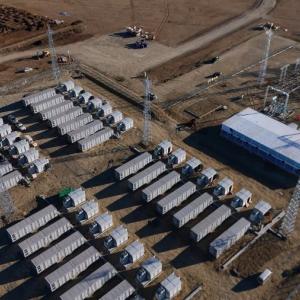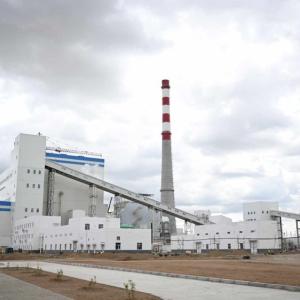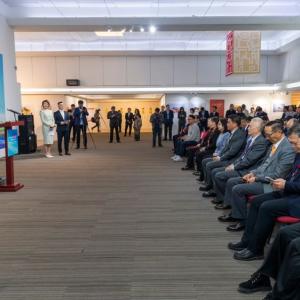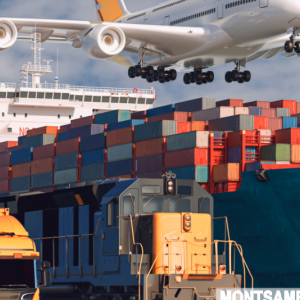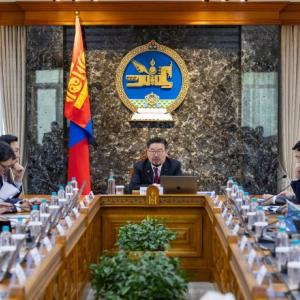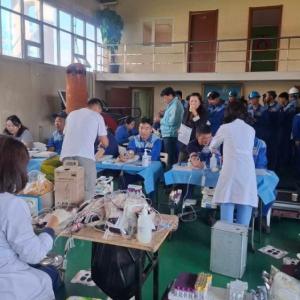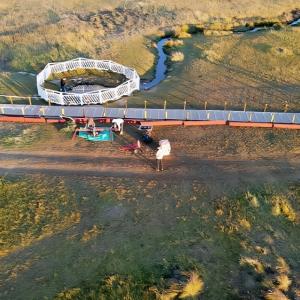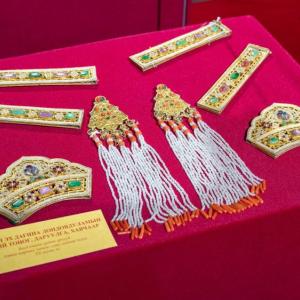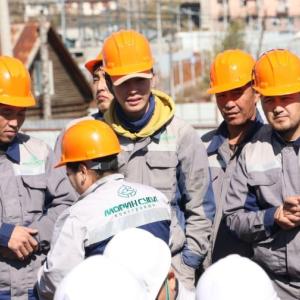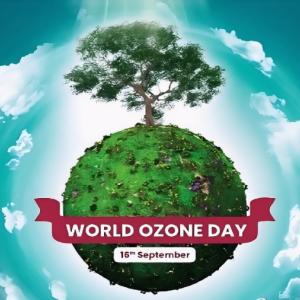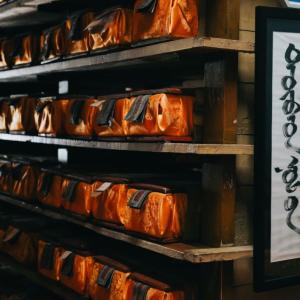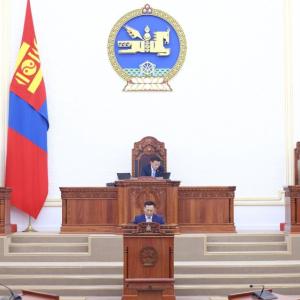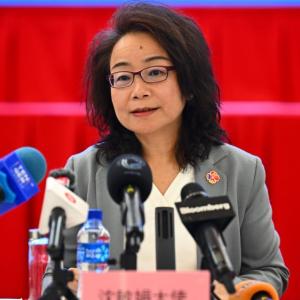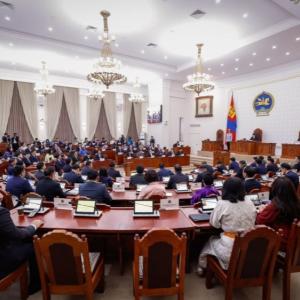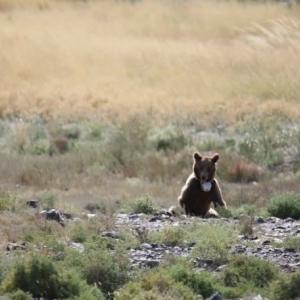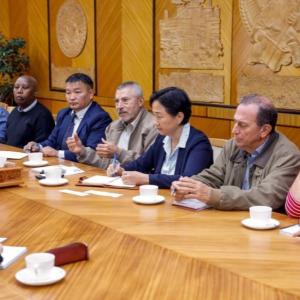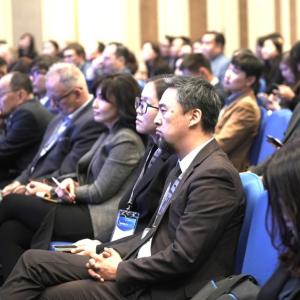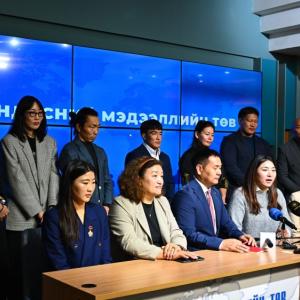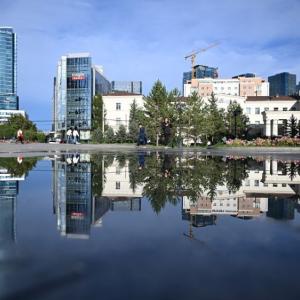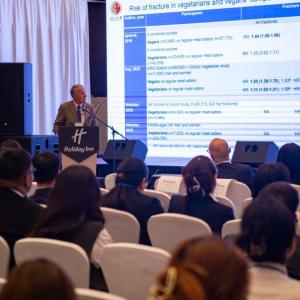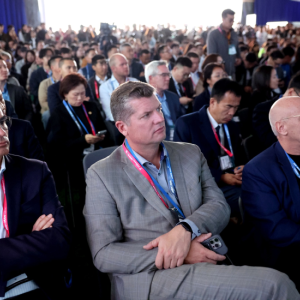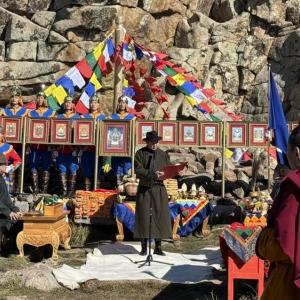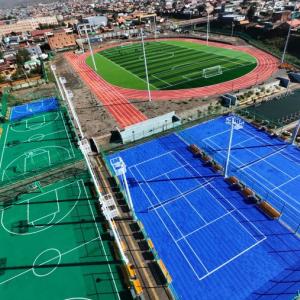The soil and water indicators in Dornogobi aimag are related to the naturally occurring geological mineralization and not to the company activities
Society
Ulaanbaatar /MONTSAME/. The working group appointed by Government’s Administration to conduct a
study and analysis around the uranium plant of Badrakh Energy company in Ulaanbadrakh
soum of Dornogobi province presented its conclusion on October 5. This working
group concluded that there is no impact on the environment and the health of
the communities and livestock from the activities of the company called Badrakh
Energy. But during this reporting, it was also informed by GASI that the
concentration of certain heavy metals was naturally elevated in deep water
wells in the vicinity of Ulaanbadrakh soum.
State senior inspector
for environmental control at General Authority for Specialized Inspection
U.Ulziitsetseg was interviewed regarding the study and analysis of water and
soil.
-The GASI took part in
the working group appointed by Government’s Administration. Would you like to
briefly introduce what studies and analysis your authority conducted?
-The working group
appointed by the order 131 of the Head of Government’s Administration of the
year 2020 was made up of sub-groups. The third sub-group to determine whether
there was a soil and water contamination was consisted of the professional
researchers and scientists of MET, GASI, Chemistry and Chemical Technology
Institute, Geography and Geo-ecology Institute at Science Academy, Standard and
Methodology Agency and Central Geology Laboratory.
As you know Badrakh
Energy LLC conducted a test of leaching by sulfuric acid in situ in 2011. And
since then the company did not perform any activity of mining neither test. The
purpose of our WG was to determine whether the test of 2011 had any impact on
soil and water, generally speaking, the soil and water samples were taken to
give up a soil and water back ground of the region. The samples were analyzed
at the Central Geology Laboratory, Khan Lab, SGS, an international lab network
and at the Geography and Geo-ecology Institute. The analyses were made at
different laboratories only because we wanted to ensure the credibility of the
analyses. All laboratories working currently in Mongolia are equipped with high
sensor equipment’s, their capacity is improved.
A total of 16 water
wells and springs were sampled, they are located at 12-85 km from the Umnut
site where the test was conducted. It involved 2 water wells at 12 km or the
nearest location, 5 springs at 27-40 km, 9 deep wells at 46-85 km. The only
open spring was Baruunbayan spring that extended from Zuunbayan to Dulaan Uul
and was created by the deep fault of Zuunbayan located at 12 km from the area. It
is a major representative of the regional surface water. It sometimes dries up
during summer whereas it covers a large area so that its boundary becomes invisible when
the water flow increases.
With regards to soil, a
total of 11 samples was taken from the vicinity of Umnut test site, Zuuvch Ovoo
Pilot plant, Gunsukhait, Modon shand and Baruun
bayan bulag water well and herder household Tserendulam.
For the water used for
drinking purpose of the communities and the livestock, the water was very hard
and highly mineralized in the four water wells including Gunsukhait, Tsevuun-1,
Tsevuun-2 and Tsagaan ereg. Adding to that, the concentration was higher for
sulfate, for chlorine, for calcium and for magnesium ion, for some indicators
it was 2-3 times higher, which exceeded the standard respectively. In the water wells of Gunsukhait, Dengiin Us
and Uvgun Mod, the uranium exceeds the authorized limitation by 4.4-11 times.
The strontium is 1.5-3 times higher than the norms in the water wells of
Gunsukhait, Tsagaan Ereg, Tsevuun 1 and Tsevuun 2. The concentration of arsenic
is 40-80% higher than the standard in 5 water wells including Naimaa, Bulag
shand, Gunsukhait, Khongoriin us and Uvgun mod.
The water well of
Gunsukhait where the uranium concentration is the highest is located at 23 km
from the test site, Dengiin us at 50 km, Uvgun mod at 25 km. From this fact, we
can say that the region is naturally or the geological formation of this region
makes the uranium concentration very high. For this reason, the underground
water is rich in uranium.
People say that there is sulfuric acid intoxication due to using the sulfuric acid for the test. When being polluted with sulfuric acid, the water becomes acidy with a decrease in pH and increase in sulfate ion. The pH level was 7-8 or low alkaline for the water of all analyzed water wells (alkalinity being the opposite of acidity). Only Gunsukhait water well that demonstrated a high concentration of sulfate ion or 2.3 times higher than the norm is located but it is located at 23 km far from the test site. Hence, there is no ground for saying that the underground water was polluted by the sulfuric acid.
A spring is underground water that appeared on surface due to soil fracture.
The only existing Baruunbayan spring is highly mineralized, significantly hard,
presents an intense organic pollution, muddy and contains magnesium, sulfate,
chlorine, strontium and uranium with a concentration that is 2-25 times higher
than the norm. It means the underground water that feeds this spring contains
an important quantity of these ions. In other words, the soil rock is composed
of minerals that naturally contain these elements so that the underground water
demonstrates such indicators.
For the soil,
only the arsenic exceeded the norm among the soil contaminant substances and
elements and other elements remain under the norm. The arsenic exceeds the authorized norm at the
Umnut site where the test was performed. But it is 2 times higher in the soil
at Baruun Bayan well which is located at
50 km and at Modon shand well located only at 11 km far from the test site,
this shows that the soil of this region is naturally rich inn arsenic.
-What are the exact impacts to human and livestock health due to the concentration that is above the standard?
- When drinking the water with high hardness for a long time, there is a danger of provoking cardiovascular and kidney disease that may further lead to death. It is thus necessary to avoid using above water wells for drinking or purify the water if used.
According to the recommendations of World Health Organization, consuming the water that contains uranium for a long period of time causes a kidney disease and the daily acceptable uranium intake is 1-4 µg/day. If a person drinks 2 liters of water from the water well with the highest concentration of uranium (0.33 mg/l) per day, it makes 0.66 mg or 660 µg. It means 660-160 times higher than the daily intake.
The arsenic is a very dangerous substance that damages neural system and provokes various cancers related to lung, skin, liver, kidney, blood and prostate. A common symptom that appears in case of arsenic contamination is a spot on skin.
So the people should understand well that they cannot use on a regular basis the water that exceeds the norm several times according to the analysis.
- It was concluded that the elevated concentration of uranium and other heavy metals was due to geological structure. Does it mean that other areas of our country where a uranium deposit exists may have the similar condition?
-All water is not drinkable
either it comes from underground, river, lake or spring. Mongolia, especially
the Gobi region is rich in water with the high concentration of heavy metals as
arsenic and elements as fluoride and boron. Researchers identified that the
Mongolian water contained relatively high uranium.
-When presenting the work results, the working group noted that there was no worsening condition for human and livestock health and environment due to the uranium. However, we can see that some NGOs do not really trust in this conclusion according to their comments. What explanations would you give on this?
An on-site inspection was carried out by an extended working group consisted of experts and researchers pursuant to Governmental resolution 47 in 2013 like this one. This study provided an exactly same answer or conclusion.
There is no way that the state authorities have been influenced by a company. The sub-group in charge of soil and water produce a conclusion after having ensured a comparative study based on the results of samples analyzed at the accredited laboratories.
The reason why we are highlighting about the comparative study is because two samples are taken from the same spring and then sent to two different accredited laboratories for the same analysis. Consequently, there was a very little gap between the results of two laboratories.
-The working group created in 2013 verified the work results by sending to the Republic of Korea the analysis results along with certain samples. Will you send the analysis results abroad for verification this time?
There is no need to do so. In 2013, the capacity of the laboratories were not so high, they used to analyze only some few elements such plomb. They now use high sensor devices for soil and water and analyzed more than 20 elements with high resolution this time. So it is not necessary to send them abroad.
-There was a
recommendation about not to use the water of Baruun bayan spring. What does
this recommendation mean?
It is not really accurate to use for drinking and cattle
husbandry the water of Baruun bayan spring that naturally contains a high
concentration of magnesium, chlorine, sulfate, uranium and arsenic. There is a
danger that the cattle may purge and even die due to taking from the water of
this spring. The company, as well as the local authority were so provided with
the recommendations to fence the area.
Regarding the company, these soil and water indicators are related to the
geological mineralization and not to this company’s production. The company is
so advised to purify and avoid using the nearby deep wells and fence the Baruun
bayan spring within social responsibility on the voluntary basis.
In general, we proposed the actions that may be implemented within social
responsibility such as involving on a regular basis the water wells and springs
in the underground water monitoring program and delivering on a quarterly basis
the analysis results to basin administration and other relevant state
authorities, using after purifying the water of Gunsukhait, Khongoriin us,
Dengiin us, Uvgun mod, Tsagaan ereg, Naimaa and Bulag shand that contains uranium
and arsenic above the standard and fencing the Baruun bayan spring.

 Ulaanbaatar
Ulaanbaatar







